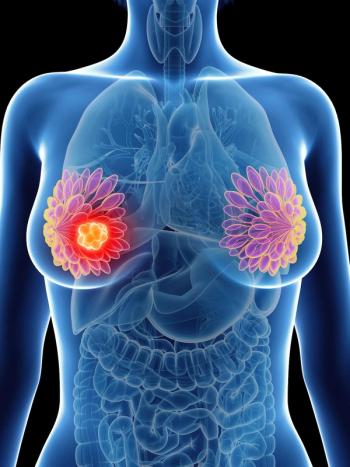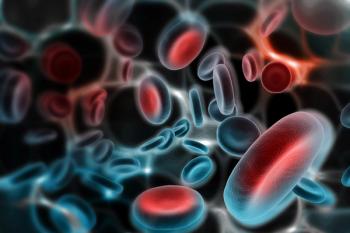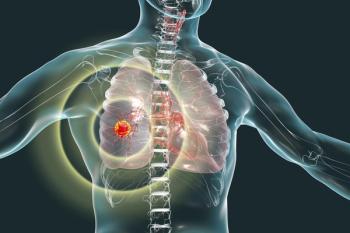
Oncology NEWS International
- Oncology NEWS International Vol 12 No 12
- Volume 12
- Issue 12
Anemia Criteria in the Elderly:Is It Time to Re-Evaluate?
This special supplement to Oncology News International presents 17 reports fromthe first annual Geriatric Oncology Consortium (GOC) multidisciplinary conference,‘‘Advancing Cancer Care in the Elderly.’’ Reports focus on issues in geriatric oncology,in particular team-based patient assessment and care delivery,adherence to medication, accrual to clinical trials, appropriate dosingthrough supportive therapy, radiation therapy, cognition problems, pain management,reassessment of outcomes, and caregiving issues.
MANHASSET, New York-Current criteria for correcting anemiain older cancer patients are not stringentenough, recent findings suggest.However, clinical trials will be neededto show that using erythropoieticagents to correct anemia beyond thegenerally accepted hemoglobin (Hb)threshold of 12 g/dL will provide anadded patient benefit, according toStuart Lichtman, MD."We have the means to correct thesemeasures," said Dr. Lichtman, associateprofessor of clinical medicine, NYUSchool of Medicine, Division of Oncology,North Shore University Hospital,Manhasset, New York. "Thequestion is, can we prove the benefit ina prospective manner?" Dr. Lichtmanspoke at a satellite symposium sponsoredby Amgen and held in conjunctionwith the first annual GeriatricOncology Consortium multidisciplinaryconference.NCCN GuidelinesNational Comprehensive CancerNetwork (NCCN) guidelines describehow to minimize anemia toxicity inelderly patients undergoing chemotherapy.The guidelines recommendusing hematopoietic growth factorsprophylactically in patients aged 70years or older undergoing chemother-apy that has a dose intensity comparablewith CHOP (cyclophosphamide[Cytoxan/Neosar]/doxorubicin HCl/vincristine [Oncovin]/prednisone).The guidelines also state that erythropoieticagents should be used to maintainHb levels at greater than 12 g/dL.Adhering to those guidelines willensure that chemotherapy effectivenessand quality of life are maintained,according to Dr. Lichtman. However,emerging data suggest that the cutoffof ≤ 12 g/dL as criteria for defininganemia in older people should be reevaluated.In a recent study that raised thisquestion, investigators showed thatincremental rises in Hb above 12 g/dLmay decrease the incidence of functionaldisability in older women (J AmGeriatr Soc 50:1257-1264, 2002).The study was a cross-sectionalanalysis of two population-based studies(Women's Health and Aging StudiesI and II, Baltimore, Maryland) including633 community dwellingwomen aged 70 to 80 years. Investigatorsmeasured Hb levels and assesseddifficulty with mobility, as shown byeither walking one-quarter mile orclimbing 10 steps.Investigators found that mobilityvaried within the "normal" Hb rangeof 12 to 16 g/dL. For example, an Hblevel of 12 g/dL was associated withmore mobility difficulty vs an Hb levelof 13.5 g/dL. Performance-basedscores improved with increasing Hbcategories, from less than 12, to 12-13, to 13-14 g/dL.Based on these findings, investigatorssaid Hb ≤ 12 g/dL "might be asuboptimal criterion for defining anemiain older women," because evenHb levels considered "low normal" bytoday's standards were associated withan adverse effect on mobility."The maximum optimal hemoglobinin this study was approximately 13to 14 [g/dL]," Dr. Lichtman said. "Ahemoglobin of 11 is not good enough,and a hemoglobin of 12 g/dL mighteven be a suboptimal criterion for defininganemia. These researchers haveshown that older patients with a hemoglobinlevel of 14 had an improveddegree of function."These hypotheses must be formallytested, however, in clinical trials uti-lizing erythropoietic agents, ideally instudies that specifically include elderlyindividuals with cancer.Erythropoietic growth factors thatare available to treat anemia includeepoetin alfa (Procrit) and darbepoetin(Aranesp). Dr. Lichtman noted thatdata on file with Amgen, the manufacturerof Aranesp, show that this particularagent yields similar efficacy inyounger and older cancer patients.Correcting anemia with erythropoieticagents can alleviate fatigue,tiredness, and other symptoms in oldercancer patients. More importantly,however, correcting anemia may ensureelderly patients receive the appropriatechemotherapy dose and schedule."It's easy to minimize toxicity bygiving less-effective therapy, but if youdo have a responsive disease (such asnon-Hodgkin's lymphoma), you reallydo have to stick to the dosing schedulethat we know can be effective," Dr.Lichtman said.
Articles in this issue
about 22 years ago
Delirium, Dementia, Apathy Require Individualized Treatmentabout 22 years ago
Single-Fraction RT Effective for Painful Bone Metastasesabout 22 years ago
Chemo-RT Before Surgery Ups Rectal Cancer Outcomesabout 22 years ago
Faster Radiation More Effective in Head and Neck Cancerabout 22 years ago
Aspirin Raised Pancreatic Ca Risk in Large Nurses’ Studyabout 22 years ago
Stressors on Caregivers May Be Overlooked, Making Them ‘Hidden Patients’Newsletter
Stay up to date on recent advances in the multidisciplinary approach to cancer.


















































































